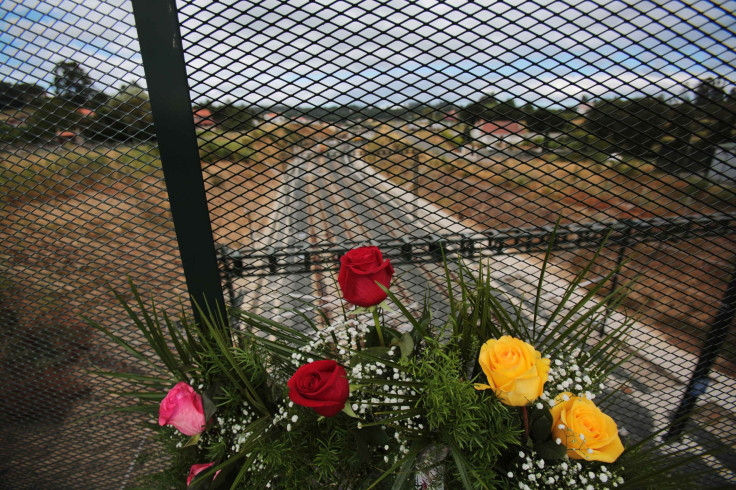Spain Train Crash Leaves 80 Dead, 36 In Critical Condition; American Onboard Counted In Death Toll

A high-speed train derailment in the town of Santiago de Compostela, Spain has left at least 80 people dead, 36 in critical condition, and 95 hospitalized. A state department official has confirmed one U.S. citizen died in the Spain train crash, with the injured including four children and five Americans.
Video analysis confirms the Alvia 730 train barreled around a tight curve at more than twice the recommended speed, between 96 and 112 mph according to some estimates. As the train rounded the curve, carriages along the train's midsection toppled over the edge of the right-hand rails, causing a domino-like chain to fall.
The train company Renfe said 218 passengers and five crew members were on board.
The driver of the train has not been considered a suspect in the crash. Rather, authorities are pointing to a flaw in the route's design, as the trip from Madrid to the northwest coastal town of El Ferrol was made cheaper by using Santiago de Compostela's existing track as a means to cut rail costs. Trains heading around the curve were supposed to slow down to 50 mph to ensure safety.
"For a native of Santiago, like me, this is the saddest day," said Prime Minister Mariano Rajoy, who toured the crash scene alongside rescue workers and declared Spain would observe a three-day period of mourning.
Upon viewing the security footage of the crash, Murray Hughes, consultant editor of Railway Gazette International, suggested a diesel-powered unit behind the lead locomotive was the first to derail, CBS reports. The front engine quickly followed, tumbling on to its right side and crashing into a concrete security wall, bulldozing along the ground. Soon after, the resulting force pulled the rear cars off the tracks, sending the train's loose carriages careening into the camera and causing the picture to go black.
"I saw the train coming out of the bend at great speed and then there was a big noise," one eyewitness Consuelo Domingues, who lives beside the train line, told the Associated Press. "... Then everybody tried to get out of the train."
The accident represents the country's deadliest train wreck in more than four decades. In 1972, a train collided with a bus in southwest Spain, killing 86 people and injuring 112.
Wednesday's crash created a horrifying scene, residents said, as plumes of smoke rose from the wreckage and people remained trapped inside the inferno, which regional president of Galicia, Alberto Nunez Feijoo, called "Dante-esque."
Thursday morning's sun rose in time with the cranes lifting carriages and other pieces of debris away from the scene. Some rescuers pulled passengers out of broken windows.
Feijoo said Galicia would observe a seven-day mourning period for those who died in the accident. For those who survived, they can only consider themselves part of the lucky ones.
"I've been very lucky," said Sergio Prego, one of the surviving passengers, "because I'm one of the few able to walk out."
Published by Medicaldaily.com



























